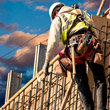

A new report from the National House-Building Council confirms growth of low- and zero-carbon technologies in newbuild developments as housebuilders look to meet government targets.
Confirming and expanding on the findings from the report 'Today’s attitudes to low and zero carbon homes: views of occupiers, house builders and housing associations', published in February 2012, the results of the new survey show that:
• Housebuilders are using a range of LZC technologies, although most rely on one or two technologies
• Solar thermal and solar PV are the most commonly-used technologies
• Biomass, renewable micro-combined heat and micro-combined heat and power systems are more frequently used in use in apartments
• Most housebuilders agree that solar-based technologies will play the most significant role leading up to and beyond 2016
• Occupiers lacked information from the housebuilder on the benefits or day-to-day operation of the LZC technologies fitted in their homes
• There is evidence of occupiers reducing the performance of their LZC technologies by working around the controls to suit their own lifestyle
• Occupiers were uncertain how the use of LZC technologies affected their energy bills.
Ted Chandler, from the NHBC Foundation, said: “This report provides further evidence of the importance of considering the needs of occupiers when installing LZC technologies into new homes. It is essential that occupiers not only understand the technologies, but also how they should be used to deliver the expected performance and contribute to lower energy bills for the home.
The NHBC Foundation report was carried out by Reading University's school of construction management and engineering, in conjunction with the Zero Carbon Hub.
The report can be downloaded from www.nhbcfoundation.org/surveyoflzctechnologies.
If you'd like to keep up-to-date with the latest developments in the heating and plumbing industry, why not subscribe to our weekly newsletters? Just click the button below and you can ensure all the latest industry news and new product information lands in your inbox every week.